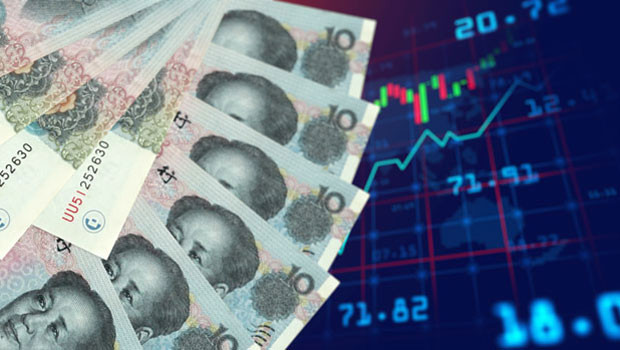Asia report: Stocks rise on China reserve ratio cut

Asia-Pacific markets saw a rise in stock values across the board on Thursday, with China and Hong Kong leading the gains following an announcement from the People's Bank of China.
The central bank disclosed plans to reduce reserve ratio requirements (RRRs) for Chinese lenders, subsequently boosting market sentiment.
Property stocks rallied on the news, as the measures were expected to enhance liquidity for developers.
“Asian markets saw modest gains, although the overall positive momentum was limited due to the impact of various earnings reports and the recent increase in global yields, which partially offset the excitement over Chinese stimulus measures,” said TickMill market analyst Patrick Munnelly.
“The Nikkei 225 eventually turned positive but lagged behind other regional markets, briefly falling below the 36,000 handle.
“Both the Hang Seng and Shanghai Composite received a boost, with the latter outperforming as mainland investors reacted to China's latest support measures, including a 50 basis point RRR cut that will release CNY 1trn of funds.”
Markets in the green across the region
Japan's market performance was relatively stable, with the Nikkei 225 edging up by 0.03% to reach 36,236.47 points, while the Topix index saw a modest gain of 0.11%, settling at 2,531.92.
Leading the performers on Tokyo’s benchmark was DIC, which rose by 5.47%, followed by Nippon Paper Industries, up 4.94%, and Mitsubishi Materials, with a 3.57% increase.
Chinese stocks surged, with the Shanghai Composite index advancing by an impressive 3.03%, closing at 2,906.11 points, and the Shenzhen Component gaining 2% to reach 8,856.22 points.
Among the top performers in Shanghai were Everbright Jiabao, with a 10.2% increase, and AVIC Capital, which rose by 10.16%.
Hong Kong's Hang Seng Index exhibited strength with a notable gain of 1.96%, closing at 16,211.96 points, led by ENN Energy Holdings, which surged by 12.41%, Longfor Properties, up by 8.1%, and PetroChina, which saw an 8% increase.
South Korea's Kospi index displayed marginal growth, edging up by 0.03% to close at 2,470.34 points.
Key performers in Seoul included Hanmi Science, with a 10.03% increase, and Lotte Chemical, which rose by 6.37%.
Australia's S&P/ASX 200 experienced a modest increase of 0.48%, reaching 7,555.40 points, led higher by Mineral Resources, up by 7.07%, and Resmed, with a 6.36% rise.
New Zealand's S&P/NZX 50 recorded a gain of 0.28%, closing at 11,889.63 points, with Synlait Milk rising 3.53% and NZX adding 2.86%.
Currency markets saw minor fluctuations, with the dollar last up 0.03% on the yen to trade at JPY 147.56.
Meanwhile, the greenback dipped 0.17% against the Aussie to AUD 1.5178, while it decreased 0.23% on the Kiwi to change hands at NZD 1.6328.
In oil markets, Brent crude futures were last up 1.35% on ICE to $81.12 per barrel, while the NYMEX quote for West Texas Intermediate advanced 1.52% to $76.23.
Korean economy grows more than expected
In economic news, a fresh advance estimate from the Bank of Korea showed South Korea's economy demonstrating robust growth in the final quarter of 2023, exceeding expectations.
Gross domestic product (GDP) expanded 2.2% in the fourth quarter when compared to the same period in the prior year.
That figure outperformed a Reuters poll estimate, which had pencilled a slightly lower growth rate of 2.1%.
Over the course of the entire year, South Korea's GDP registered a 1.4% rise.
A closer look at the data revealed that exports played a significant role in driving the positive economic performance.
In the fourth quarter, exports jumped 2.6% compared to the previous three-month period.
The growth was particularly driven by increased shipments of semiconductors, a key component of South Korea's export market.
Reporting by Josh White for Sharecast.com.